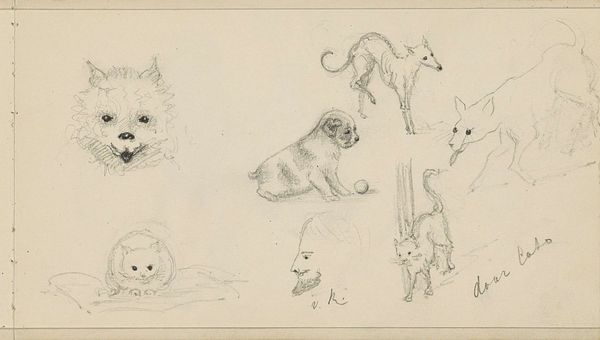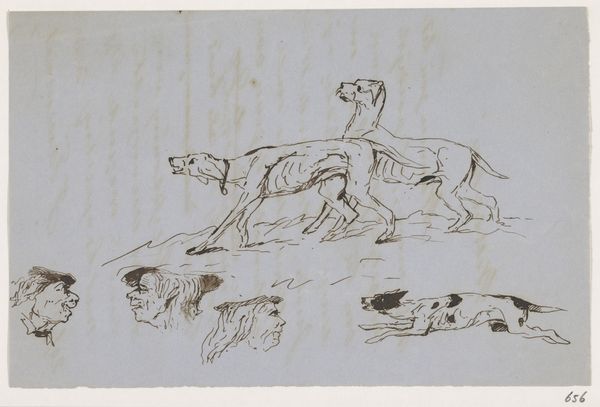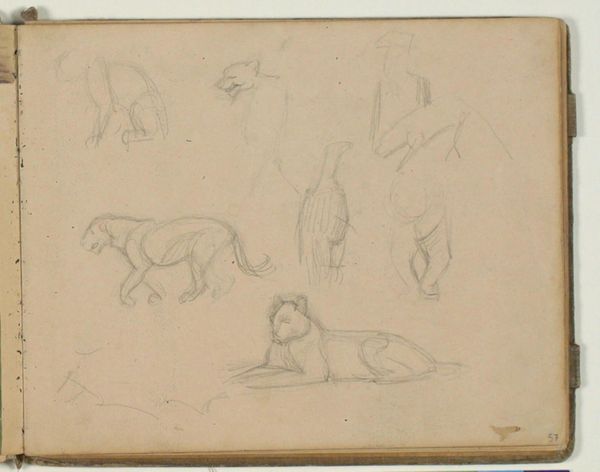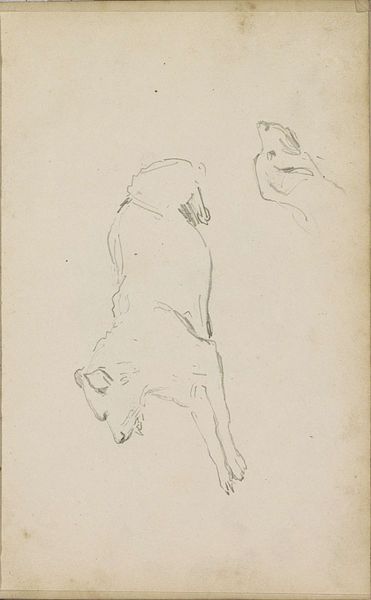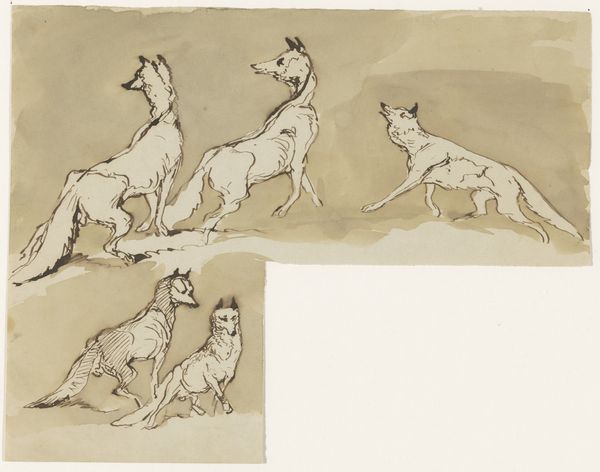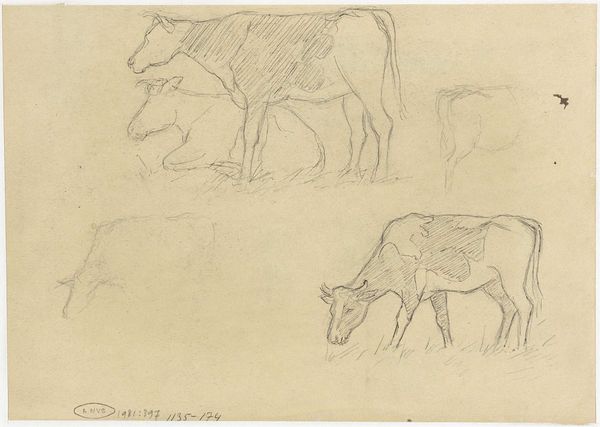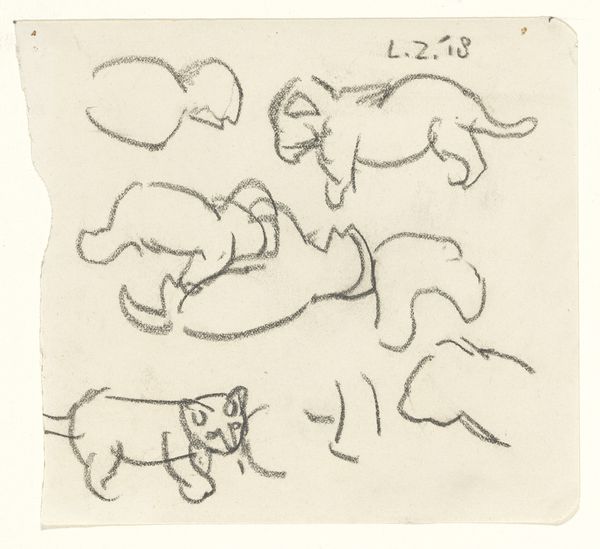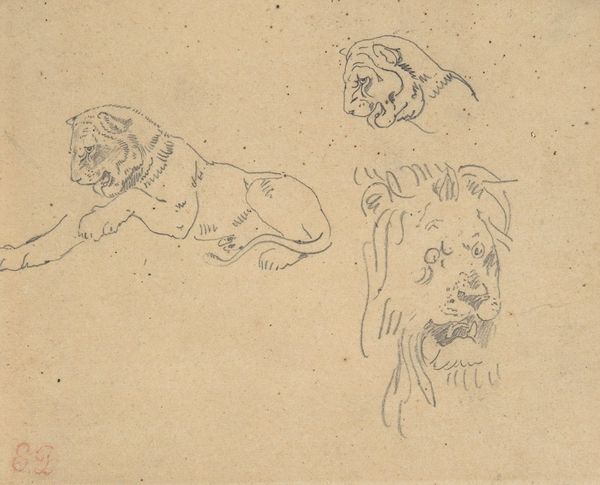
drawing, dry-media, pencil
#
drawing
#
light pencil work
#
landscape
#
figuration
#
dry-media
#
pencil
Dimensions: height 283 mm, width 233 mm
Copyright: Rijks Museum: Open Domain
Editor: This is "Studies van leeuwen" by Carel Adolph Lion Cachet, dating sometime between 1874 and 1945. It's a pencil drawing held at the Rijksmuseum, depicting multiple lions in various poses. I’m really drawn to the simplicity of the line work. What stands out to you about this piece? Curator: The rapid pencil lines suggest this was likely a sketchbook study, perhaps done from life at a zoo. Given Cachet’s life and travels, it raises interesting questions about the cultural context. Were these sketches preparation for a larger, more politically charged work? Think about the lion as a symbol of colonial power. How does that complicate the way we view these seemingly innocent animal studies? Editor: That’s a compelling angle. I was mainly focusing on the artist's skill in capturing the animal's form and movement. I hadn’t considered the socio-political implications of the lion as a symbol. Curator: It’s easy to get lost in the pure aesthetics, but art always exists within a social framework. Cachet's dates places his artistic development within periods of immense societal change. Do you see anything in the way the lions are depicted - their posture, the apparent lack of a "kill" or struggle, for example, that can provide insight into art production of his time? Editor: Now that you mention it, their calm demeanor contrasts with the fierce image we often associate with lions. They almost seem domesticated, less symbols of raw power, more like trophies. Curator: Exactly. That shift, that framing of nature through a particular lens, reflects the changing power dynamics and how those ideals influenced public perception through art. It goes from being a scary image of something "out there," to a demonstration and public display of the artists' power and control. Editor: This makes me think differently about the role artists play in shaping our understanding of the world around us. Thank you. Curator: My pleasure. It's precisely those historical connections that give seemingly simple studies like this a much deeper resonance.
Comments
No comments
Be the first to comment and join the conversation on the ultimate creative platform.

